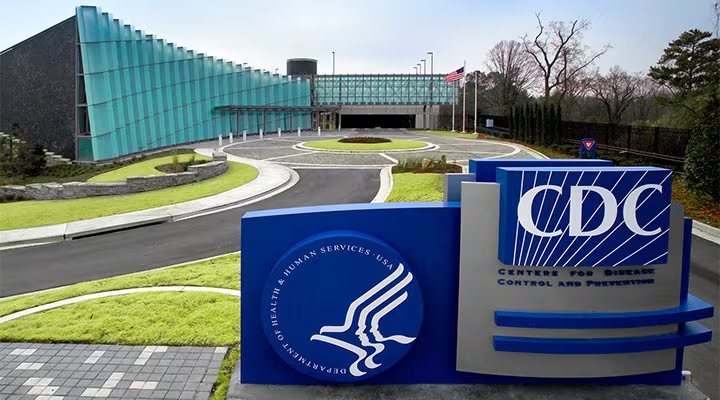
Successfully reducing children’s exposure to lead requires collaboration between all stakeholders: private and public; health, environmental, and housing; and federal, state, and local. Collaboration is particularly important when it comes to sharing data that helps identify homes that have already exposed children to lead so that the causes and underlying issues can be addressed. An excellent example is a local Connecticut health department coordinating with EPA to clean up lead based paint hazards in a renovated old factory where the health department’s authority was limited. It is also important to have reliable, publicly available, local-level data to set priorities and provide documentation to strengthen grant proposals.
For these reasons, a February announcement by EPA, HUD, and CDC describing two memoranda of understanding (MOUs) caught our attention, especially when described in such positive terms by the three agencies working “together to identify, reach, and assist communities most at risk from exposure to lead.” However, on closer examination, one MOU raised serious questions that we have been unable to answer after reaching out several times to the agencies.
What Happened?
In the first MOU, EPA and HUD agree to cooperate on lead paint compliance and civil enforcement activities,1 essentially updating and renewing their 1997 agreement. This MOU, which has no expiration, will be reviewed every three years.
A key provision allows these two key agencies to share “personally identifiable information” (PII), sensitive information that must be handled with care to respect people’s privacy while addressing the public health threat.2 Typically, this is contact information for a family whose child has been harmed by lead, as well as their address and any relevant documents. The MOU states that “EPA and HUD acknowledge that certain [PII] may be transferred pursuant to this MOU” and “agree that such data must be adequately protected from any unauthorized access, consistent with federal privacy and information standards, and the Privacy Act, where applicable.”
The second MOU is a five-year, demonstration pilot effort between HUD, CDC, and EPA Region 3 “to explore the sharing of data or other information for the purpose of protecting individuals from lead exposure in the home, community, and environment” [emphasis added]. The MOU states it serves to strengthen the partnerships among CDC, HUD, and EPA to “allow for more consistent identification of high-risk communities and delivery of federal resources and services to those communities from across these agencies.”
EPA Region 3 will attempt to recruit the states in its jurisdiction3 in information sharing. The pilot is to “develop the necessary procedures and best practices for phased adoption nationally” and to “facilitate interaction and engagement with state or local blood lead data stewards.”
CDC agrees “to share blood lead surveillance data at the lowest geographic level available in accordance with all applicable laws, regulations, and existing agreements” but, unlike the HUD-EPA MOU, it will not include PII.
Our Take
We applaud EPA and HUD for their agreement. Updating and renewing the 1997 MOU is a helpful step given all that has changed in 27 years.
In contrast, we have serious concerns with the CDC-HUD-EPA agreement, not because it is not a positive step, but because it was such a small step when so much more is needed regarding PII. With all parties clearly capable of protecting confidential information, it seems problematic—and unnecessary—to explicitly exclude PII. We recognize that this MOU is the first step in a long process that, hopefully, will lead to greater data sharing, but taking it off the table sends mixed messages and belies the urgency of the issue.
Even if CDC does not currently collect PII from state and local health departments, through its grants and other arrangements with them, CDC is able to access to the information EPA and HUD most need to address known lead hazards, prevent additional harmful exposures to lead, and support local development of primary prevention and policy efforts.
We recognize the sensitivity of PII, but as three important public health agencies, CDC, HUD, and EPA are capable of handling—and protecting—confidential information. They should be serving as a model for state and local agency collaboration.
In essence, CDC appears to be willing to share only data that should already be made publicly available.
Next Steps
In the absence of federal leadership on data sharing, we encourage state and local health agencies to find a path forward and serve as an example to others. Please share your successes with Unleaded Kids so we can highlight the collaboration as we did in our recent blog on EPA and the local health department in Connecticut.
- The MOU is focused on civil enforcement of HUD’s and EPA’s Lead Disclosure Rules, EPA’s Renovation, Repair and Painting (RRP) Rule, and HUD’s Lead Safe Housing Rule (LSHR). ↩︎
- PII is defined in the CDC-HUD-EPA agreement as “information about an individual maintained by an agency that can be used to distinguish, trace, or identify an individual’s identity including personal information that is linked or linkable to an individual.” ↩︎
- EPA Region 3 covers Delaware, Maryland, Pennsylvania, Virginia, West Virginia, and Washington, DC. ↩︎
